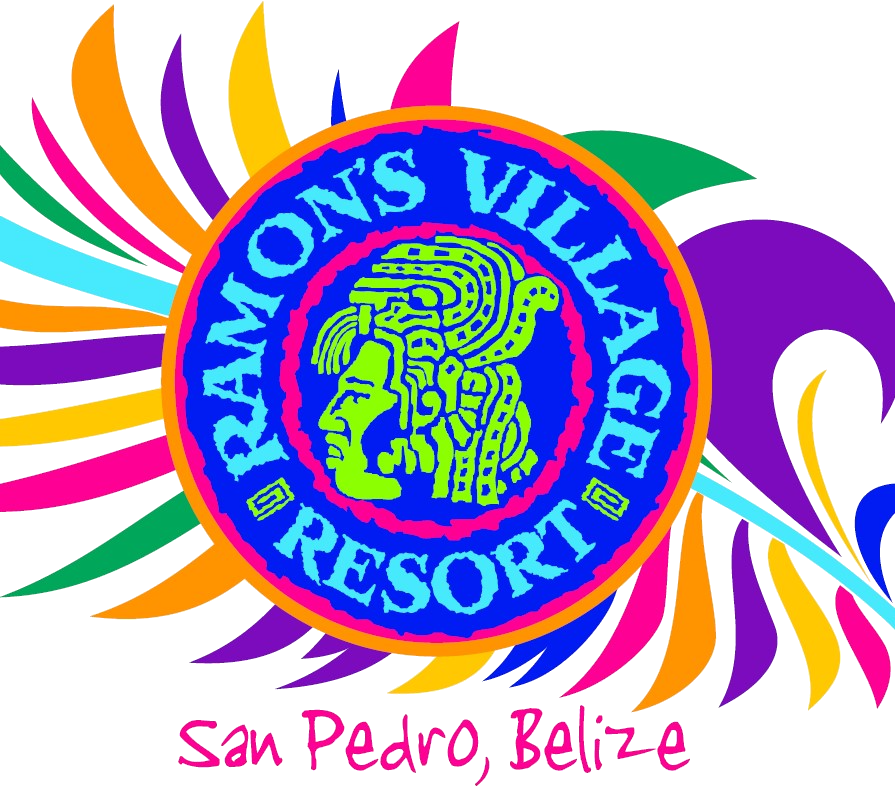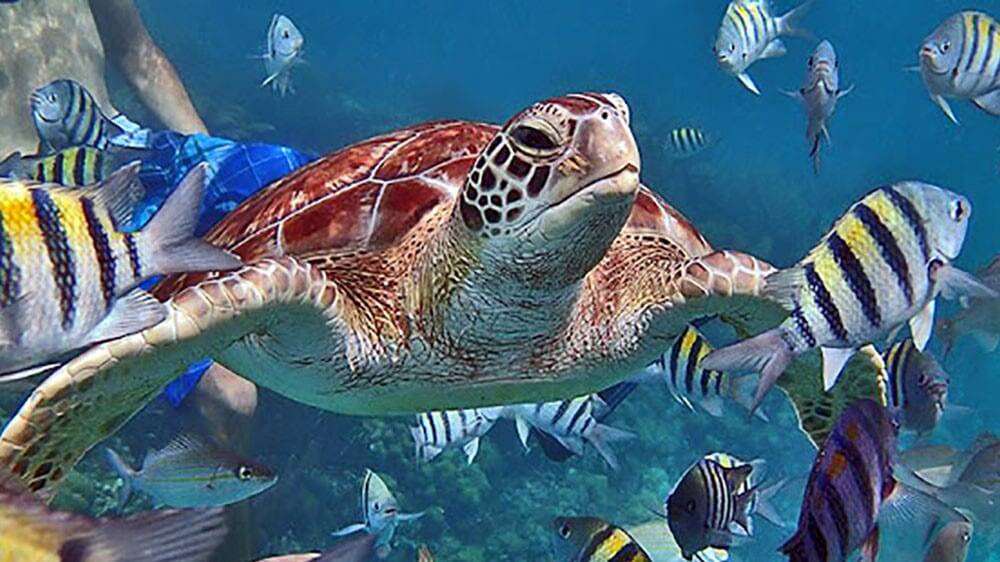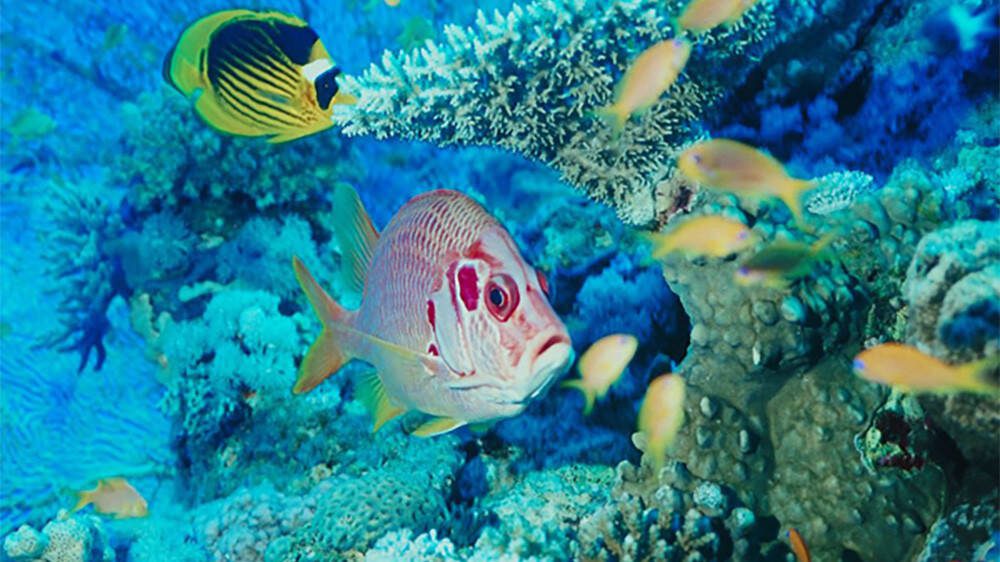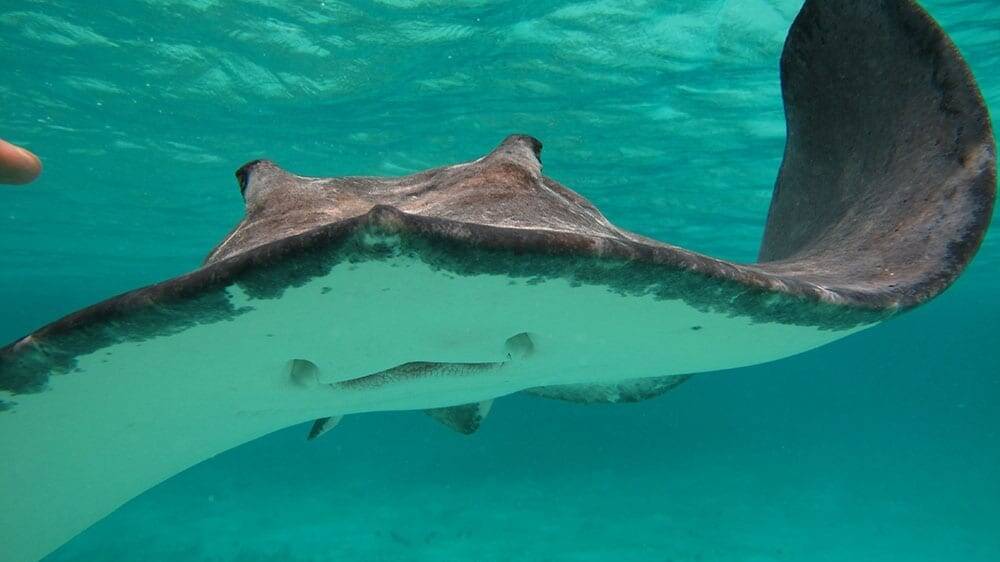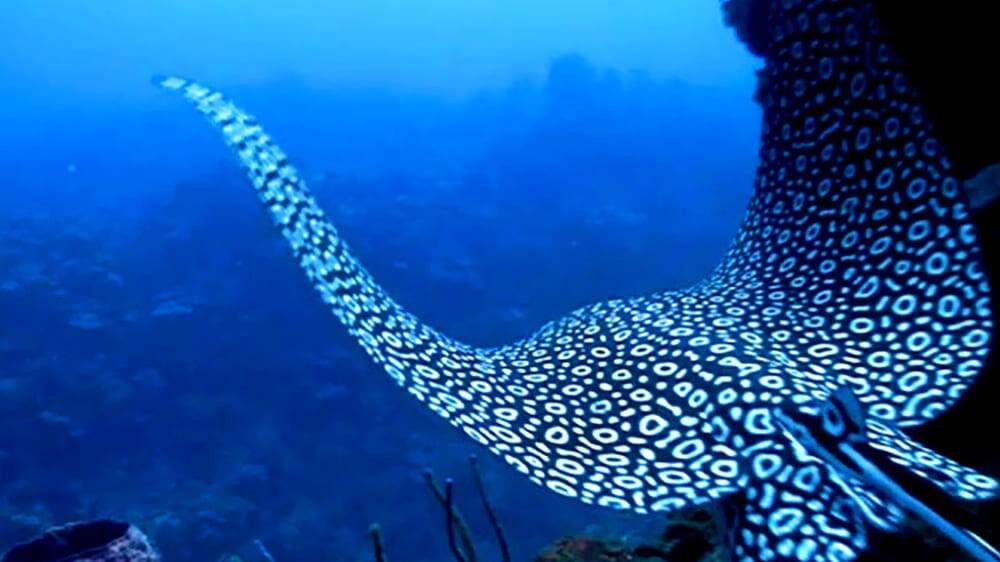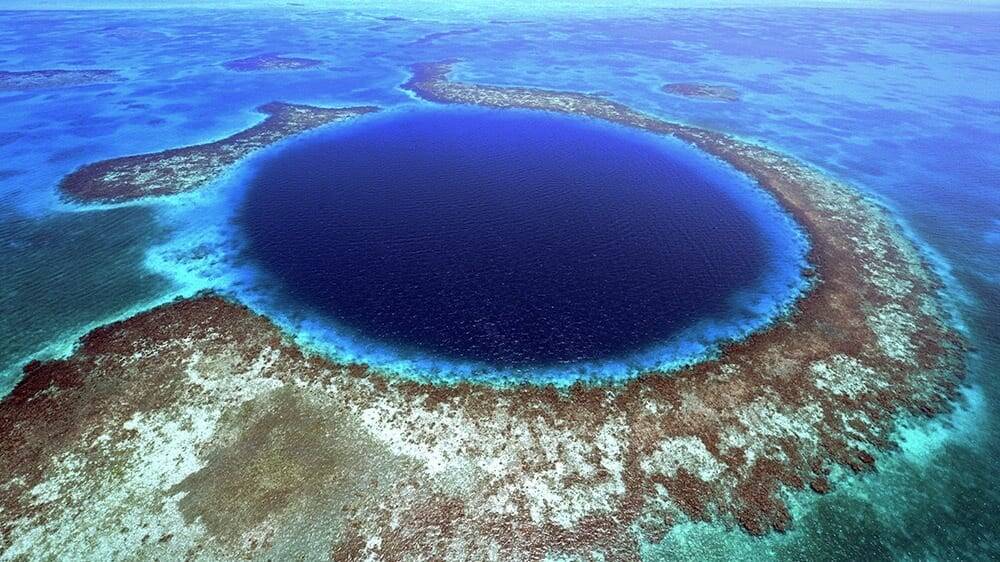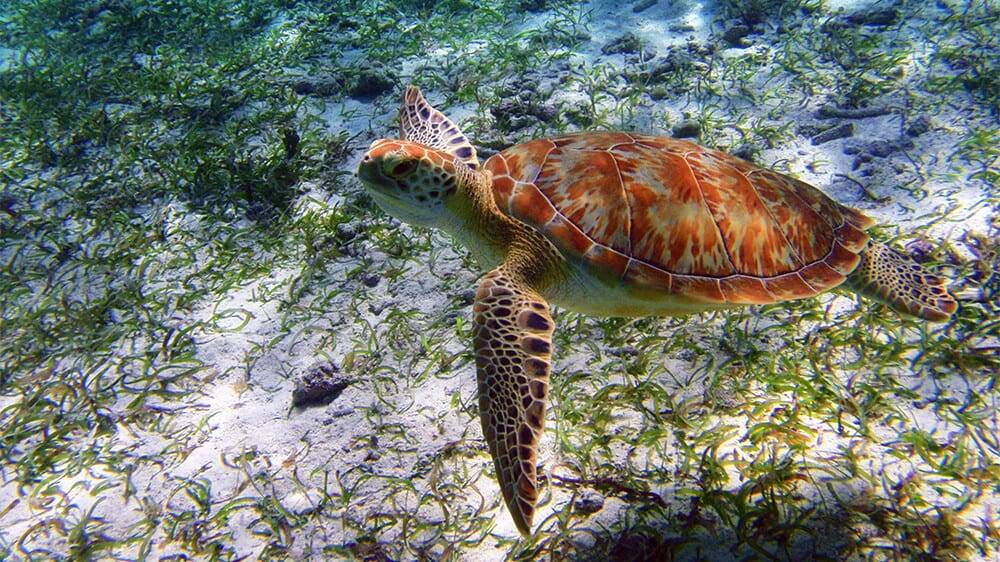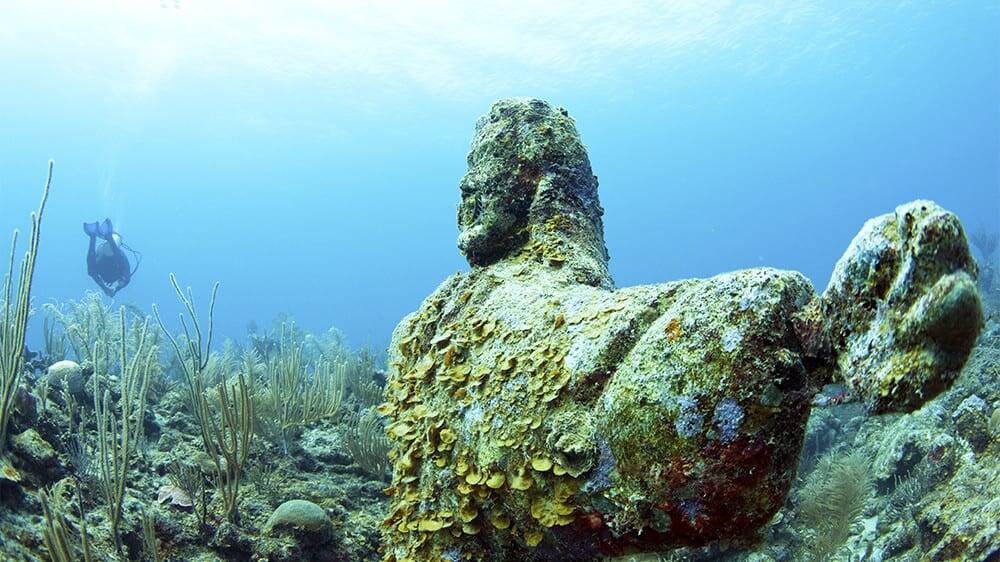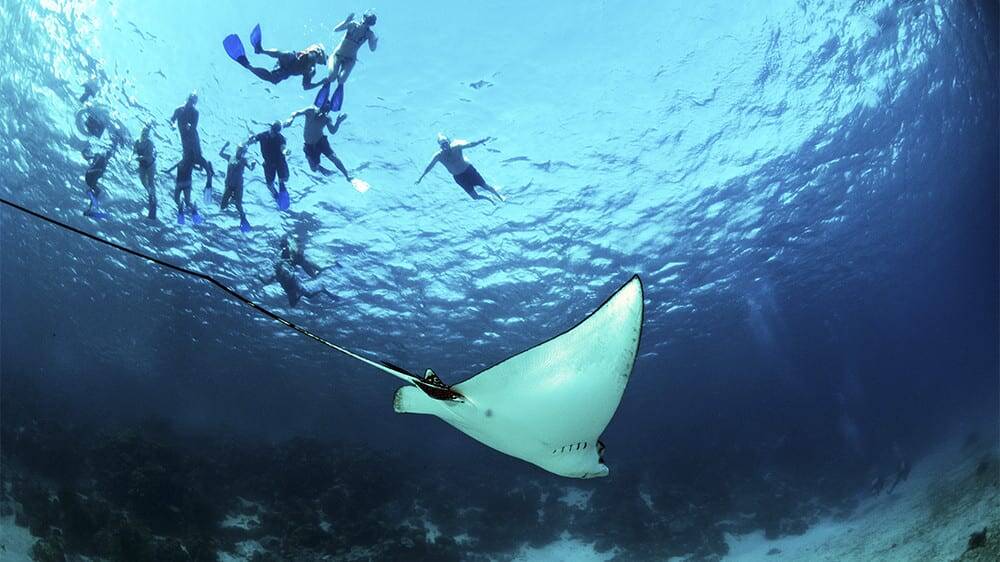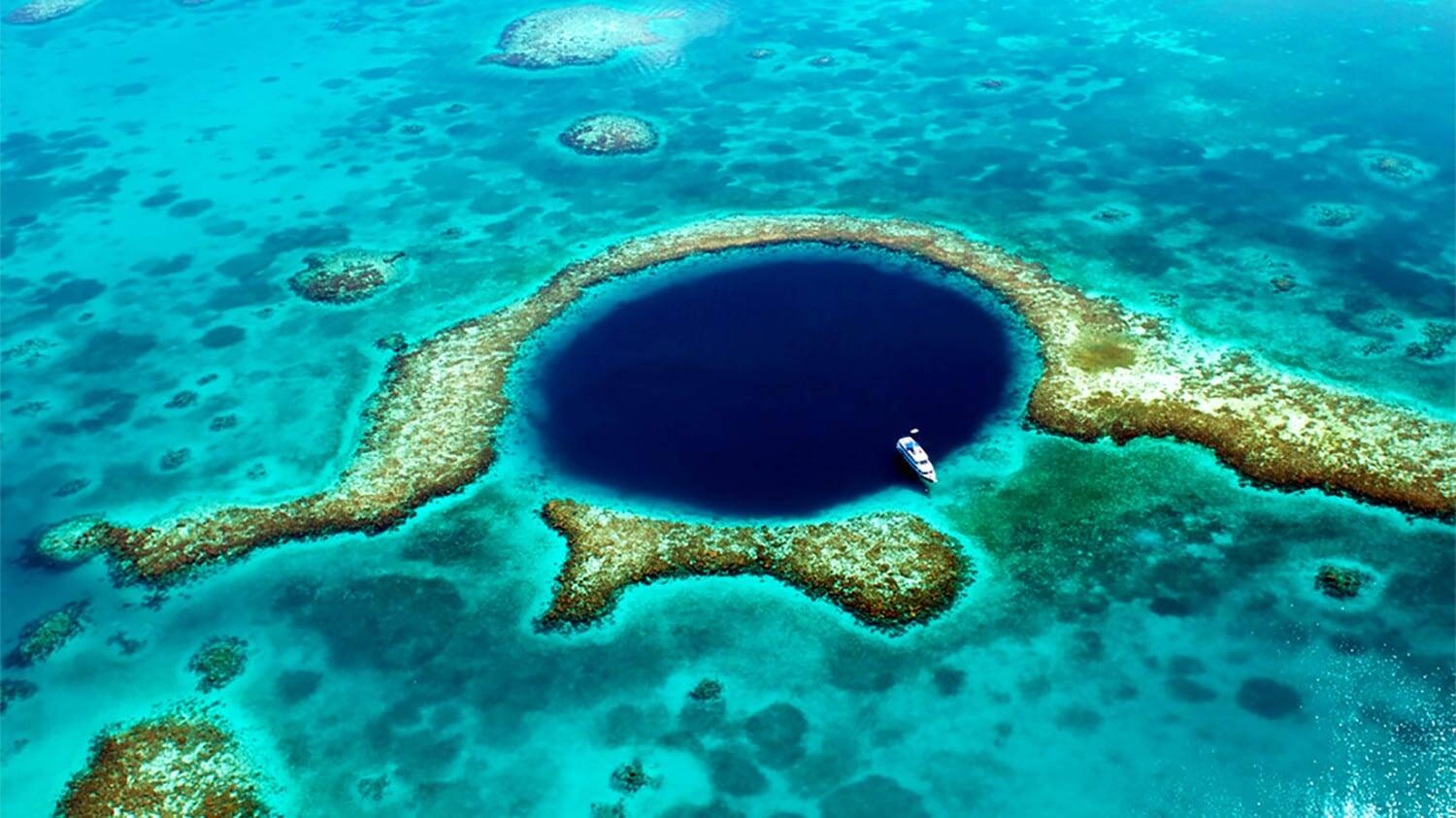Scuba Trips
Diving The Outer Atolls
Blue Hole Day Trip
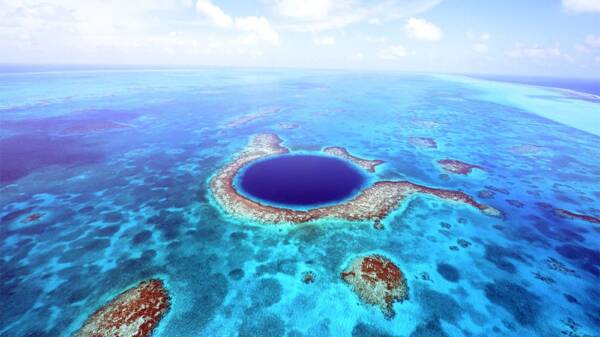
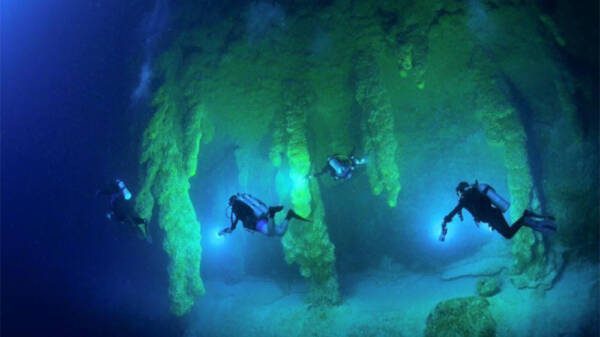
This is the granddaddy of them all. When Jacques Cousteau and his team of divers discovered the Blue Hole back in 1971, they invited Ramon Nunez, before he became our legendary host at Ramon’s Village Resort, to be their guide on this historical expedition. If you see Ramon, ask him to tell you about the amazing adventure he had with the one-and-only Jacques Cousteau. Even if you do talk with Ramon, you must still see the Blue Hole for yourself.
Your adventure with Ramon’s Village Divers begins on our dock with a continental breakfast. When your tummy says you’ve had enough to eat, you’ll board the Lady Grace, our 46-foot Newton dive boat. The two and half hour ride to Lighthouse Reef, which is home to the Blue Hole, passes some interesting sights, but it’s also a good time to enjoy some quiet time or make new friends in your party.
Arriving at the Blue Hole shortly before 9 a.m., you’ll spend the first few minutes in awe of this incredible dive site. We’ve been told it’s the best known, most easily recognized and most photographed dive site in the world, and you can experience it.
The Great Blue Hole was formed sometime during one of the ice ages that covered the North American continent several million years ago. At this time it was dry and because of its limestone makeup, stalagmites and stalactites were created drop by drop of limestone rich water. Some of these stalactites are nearly thirty feet long and nearly eight feet in diameter.
The top edge of the Great Blue Hole is nearly 1,000 feet across and is ringed by fringing coral that makes for an excellent snorkeling adventure. The base of this fringing reef gradually slopes at about 40 degrees until at a depth of 50 feet where it suddenly drops into the Great Blue Hole. A sheer, pockmarked wall is the only reference as descent is initiated. Most of the time there will be a slight thermocline felt at around 90 feet and at this point the visibility will become incredible. The stalactites start at a depth of 120 feet and are plainly in view at the 130 foot limit of sport diving.
The Great Blue Hole is not known for its marine life, especially at depth. On occasion, you will see groupers, horse-eye jack, squirrel fish and even schools of Reef Sharks. This really does make for an eerie, almost surrddeal setting.
Due to the depth, at most, there will be an 8 to 10 minute bottom time which includes the descent. A slow, controlled ascent back up the wall, to a safety stop at the base of the fringing reef makes this dive 20 to 25 minutes total. A truly unique dive site which for many is the dive of a lifetime and for any diver well worth the price of admission.
Trip includes 3 dives, a Continental Breakfast on the Ramon’s Village dock before departing and a picnic lunch at Half Moon Caye. Departs 5:30 AM and returns about 4:30 PM. Requires a minimum of 10 divers. Cost is $285 plus 12.5% tax plus $40 park fee per person. Gear not included.
Half Moon Caye Wall
About 6 miles south of the Great Blue Hole lies your second dive site. Half Moon Caye Wall is one of the most phenomenal sites to dive in all of Belize. We do a Multi Level Dive to a maximum depth of 60 feet with 45 minutes of bottom time. The structure alone makes this a must do dive.
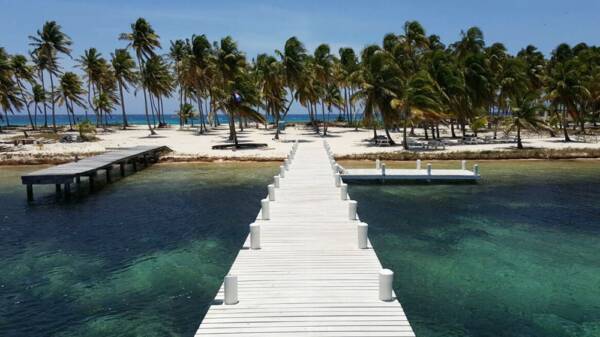
Along a mile to mile and a half section of the wall, there is a towering ridge of reef that is cut through with crevasses that in some places are 150 feet deep. Growths of mountainous star coral, numerous varieties of large sponges, and soft coral growth galore decorate this reef. Along the top edge of the reef, the depth averages between 35 and 40 feet. On the inside of the reef is a vertical drop to white sand that is strewn with garden eels, red hermit crabs, peacock flounders, blue parrot fish, barracuda, and southern rays. The outside edge of the wall plummets straight down to depths exceeding 3,000 feet. Swimming through the cuts in the wall from inside to outside offers chance encounters with tarpon, eagle rays, turtles, Caribbean Reef Sharks and occasionally a solitary manta ray.
Half Moon Caye is a National World Heritage Monument managed by the Belize Audubon Society, a branch of UNESCO, and has a bird sanctuary that is the home of the Red-Footed Booby. After your second dive we go ashore at Halfmoon Caye for lunch and a trip into the interior of the island to view the nesting site of the Booby bird. Views from the observation tower offer some excellent photo opportunities. During the months of March, April and sometimes May, you will see down-covered baby Booby’s in the nest. Large marine iguanas can be encountered on the trek back into the sanctuary. Halfmoon Caye is the only place where the Red-footed Boobies are found.
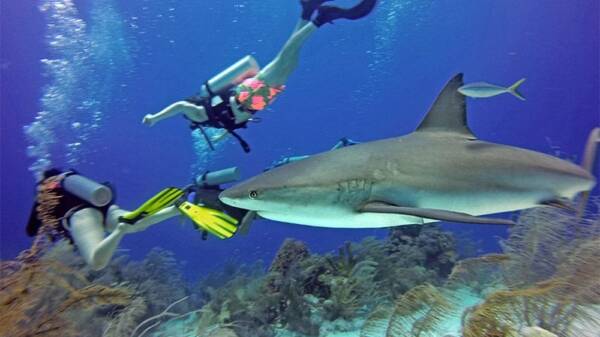
The Aquarium at Long Caye
Your third dive will take place at The Aquarium near Long Caye. Again we do multilevel dive with a maximum depth of 50 feet for a bottom time of 45 minutes. The wall around the northwest side of Long Caye will start in 15 to 20 feet of water and drop down almost sheer to a slight bump, beyond the limits of sport diving, and then it plunges again into the depths. The crystal-clear, blue water has an abundance of colorful sponges, beautiful deep fan gorgonians and marine life such as Reef Sharks, Dolphins and Turtles.
Your day trip will conclude back on the Ramon’s Village Dock around 4:30 PM; just in time to freshen up and enjoy a dinner at Pineapples on the Beach, which will rival your day’s diving experience.
*Trip includes 3 dives, a Continental Breakfast on the Ramon’s Village dock before departing and picnic lunch at Half Moon Caye. Departs 6:00AM and returns about 4:30PM. Requires a minimum of 10 persons or you can pay an additional fee and go with less than the minimum. Requires a $40US Park Fee.
Turneffe Elbow & Calabash Caye
The Turneffe Atoll is Belize’s youngest and largest Atoll; it’s thirty-two miles long and eight miles wide. At the southern tip of the Atoll, about a two and a half hour boat ride from the Ramon’s Village dock, is an incredible drift dive known as the Turneffe Elbow. Recently rated #1 as a World Class Dive Site, the Turneffe Elbow is another must do dive.
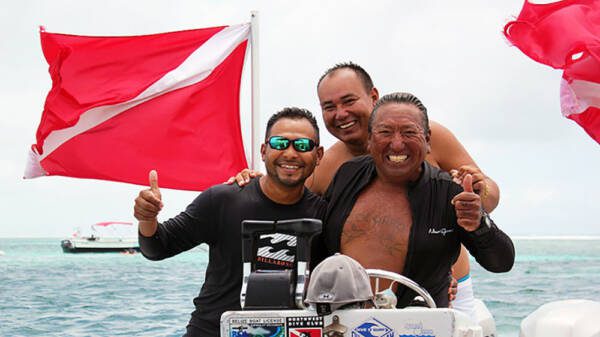
Upon arrival at the Elbow, our Ramon’s Village Divers dive masters will give a dive briefing, and then everyone will do a “giant stride” into the water. A maximum depth of eighty feet is planned, but shallower depths can be maintained per individual diver’s preferences. This is a multilevel dive that allows for about forty minutes of bottom time. This dive normally has visibility of about ninety feet, and currents are constant. You drift along huge coral mounds consisting of hard corals and some of the largest barrel sponges you’ll ever see. Common as well, for deep water, are gorgonians and large schools of snapper, grouper, and horse–eyed jacks. At this site, the stronger the currents, the greater the abundance of marine life. The endless supply of microorganisms drifting in the currents feed the small fish, which feed the larger fish and sharks.
The second dive site on this trip will be at the Wit. The Wit is a 300-feet long sunken ship, the first at Turneffe. Diving on The Wit is a unique and wonderous experience for any sea lover. The ship has just recently been sunk. So, for a time, divers have the opportunity to observe a rare and exclusive event, as the marine life transform this human made structure into a home, a nursery, and a shelter. This site is at a depth of eighty feet with a bottom time of around fifty minutes. Following this exhilarating dive, we will dock at Calabash Caye where lunch will be served, and you can also enjoy a leisurely nature walk along The Calabash Nature Trail. Then we will head to Northern Turneffe to dive one of the pristine walls provided there.
Snacks and juice will be served along the way, but don’t forget, Pineapples on the Beach will be waiting to serve you a delicious dinner after your return; it’s not included in the price of the dive. Take time to freshen up, and join us at Pineapples on the Beach for a great evening.
Trip includes 3 dives, a Continental Breakfast on the Ramon’s Village dock before departing and lunch on the caye. Departs 6:00 AM and returns about 4:30 PM. Requires a minimum of ten divers. Cost is $250 plus 12.5% tax plus $50 park fee per person. Gear not included.
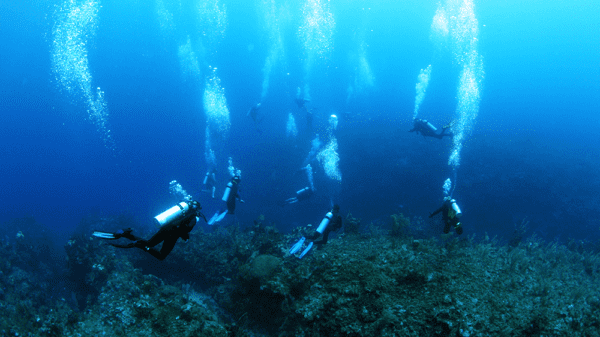
Northern Turneffe
One of the greatest aspects of the Turneffe Atoll is that it provides good diving conditions almost 365 days each year. On days when it might be a little too choppy to enjoy diving the Barrier Reef, just ninety minutes away, traveling in mainly protected waters, is the Northern End of the Turneffe Atoll. The Turneffe Atoll is home to over 200 islands.
Being much less famous than the neighboring Lighthouse Atoll, Turneffe, “the Forgotten Atoll”, has some of the most pristine diving to be found anywhere. The many mangrove islands that make up the atoll are a tremendous nursery that nourishes many different species of juvenile marine life until they are large enough to make it on their own. This unique biological situation causes the Turneffe Atoll to have some of the most prolific marine life in Belize.
The northwest side of the Turneffe Atoll boasts some spectacular diving. Sites such as the Mini Elbow, Rendezvouz, Vicente Wall and Elkin’s Bay are samples of sites dived based upon the weather conditions and the group’s experience. Whether shallow dives for certification or wall dives for more experienced divers, our captains select the most appropriate site available each trip. The sites on the northwest side of the atoll average depths on the top of the wall between thirty and fifty feet with wide spur and groove formations and vertical walls dropping in excess of 100 feet before shelving and dropping again into the deep. An abundance of marine life includes schools of Cubera Snapper and a diverse population of grouper including Nassau, Tiger and Yellow fin. The dainty Spotted Drum and the Splendid Toadfish are seen regularly. Search the deep water for Spotted Eagle Rays, the rare Manta Ray, Turtles and Sharks including rare and exciting sightings of Hammerhead Sharks. This side of the Atoll is well protected from easterly and southeasterly winds making for ideal dive conditions on most days.
Dive sites such as JoJo’s Split, Lee Ellen’s Melons, Corona and Grand Bogue, which are on the east side of the Atoll, are available when northerly and northwesterly winds blow in the winter months. The versatility of diving on the Turneffe Atoll is unparalleled. The wall on the east side of the Atoll tends to start a bit deeper in the forty-five to fifty foot range and generally has narrower spur and groove but a sheerer wall face than the west side of the atoll. Sightings of pelagics such as rays, turtles and sharks as well as reef tropical and numerous stands of Yellow Tube Sponges can be seen while diving on the east side of the atoll
Trip includes 3 dives, with a picnic lunch on board. Departs 6:45 AM and returns about 3:30 PM. Requires a minimum of 8 divers. Cost is $225 plus 12.5% tax plus $10 park fee per person. Gear not Included.
BARRIER REEF (LOCAL) DIVING
The Belize Barrier Reef, at 186 miles in length is the second largest coral formation in the world. The Barrier Reef is made up of a mixture of hard and soft corals, with the hard corals mainly at deeper depths and the soft corals nearer the surface. Commonly seen are Brain and Staghorn Corals, Sponges, Seafans, Finger and Angular Corals.
Coral formations extending out toward the deep, form what are called Finger Canyons. These Coral Ridges, up to 200 feet in length, commonly consist of Blushing and Mountainous Coral, Mustard Hill and Starlet Coral, Brain and Knobby Brain Coral, Thin Leaf, Lettuce Coral and Sponges. The Canyon Bottoms are typically white sandy slopes. The Coral Finger ridges start at a depth of about forty feet and slope to about eighty feet as they make their way toward the deep water. The Canyon bottoms range from about 60 to 120 feet in depth. These coral fingers provide numerous canyons, tunnels and swim throughs.
The Barrier Reef is home to a wide variety of fish including Cubera and Yellowtail Snapper, Parrot Fish, Butterfly Fish, Blue Tang, and Blue Cromise. Barracuda and Moray Eels are commonly seen as are Green, Loggerhead and Hawksbill Turtles. You’ll see Sting Rays, Eagle Rays, Nurse Sharks and the occasional Caribbean Reef Shark or Manta Ray.
Ramon’s Village Divers maintains a fleet of four skiffs ranging in size from twenty-eight feet to thirty-four feet. These boats are used for dives along the Belize Barrier Reef in the vicinity of Ambergris Caye and carry up to eight divers plus crew. The close proximity of the Barrier Reef, just over a quarter mile offshore, allows us to choose from thirty or forty named sites within a five to fifteen minute boat ride from our dock. The Miss Gina, our Pro forty-two foot dive boat, carries up to sixteen divers plus crew making it an excellent choice for dive groups diving the barrier reef.
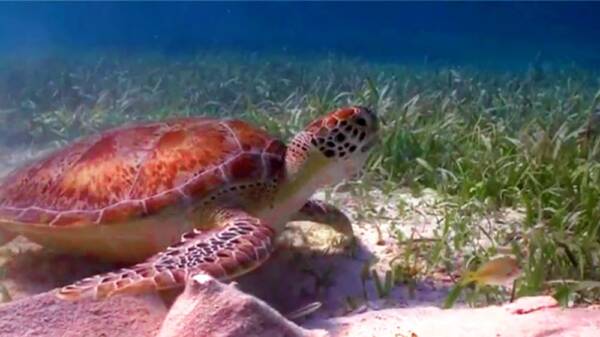
Ramon’s Village Divers offer daily trips at 9:00am, 11:30am and 2:00pm to dive sites along the Belize Barrier Reef adjacent to Ambergris Caye. Since the dive sites are within minutes of our dock, we return to our dock between dives to exchange scuba tanks and fulfill your surface interval requirement. This allows our divers to choose any combination of dives each day. Our dive sites offer both the novice and experienced diver incredible dive opportunities. Our dive masters and dive guides will customize your dive based upon your skill level.
Dive trips require a minimum of two divers or you can pay an additional fee and go with less than the minimum.
Ramon’s Canyons
This dive site located about ten minutes from Ramon’s Village Divers dock, is one of our divers’ favorite sites, not only because it’s our namesake, but because of its deep and extremely wide canyons and sandy bottoms. A site noted for its large Queen Conch and where you also have a good chance of seeing Spotted Eagle Rays.
The Hol Chan Cut
This is probably the most popular site off Ambergris Caye. It is in the middle of the Hol Chan Marine Reserve and is a great refresher dive. It is also used often for training dives. Located inside the reef this twenty-eight foot site (if you want to go deeper you’ll need a shovel) is home to large grouper, turtles, moray eels, and schools of fish.
Hol Chan Night Dive
Night Dives at Hol Chan offer a completely different experience than diving during the day. The beam of the dive light reveals a myriad of wondrous nocturnal critters such as, Basket Star, Octopus, Seahorse, and Orangeball Corallimorph. Every dive seems to include five or six Southern Stingrays and occasionally a visit from the neighborhood Lemon Shark.
Tackle Box Canyons
just five minutes away this site is noted for its deep vertical narrow canyons and numerous swim throughs. Watch for Lobster in the recesses. You’ll likely see turtles and nurse sharks and sometimes the Caribbean Reef Shark. Marine life is abundant on the top of these coral ridges.
Cypress Tunnels
The Cypress Tunnels site is a spur and groove reef that offers many swim throughs and long tunnels for you to explore. Our favorite begins at sixty feet and descends to about seventy feet over a distance of about one-hundred feet. This swim through is just large enough for divers to pass single file. If you enjoy swim throughs and tunnels, this is a great site. Exploring the grooves and spurs near the mooring line is always a great way to finish your dive. Here you can expect to find plenty of corals such as staghorn, lettuce and boulder coral. In amongst these coral formations, look for the smaller fish like the sailfin and triplefin blennies.
M&M Caverns
In front of the Mata Channel, about a half mile from Ramon’s Village Divers dock, M&M Caverns may be one of the best dives found off the barrier reef on Ambergris Caye. A very unique dive spot, due to huge coral mountains that grow right out of the sandy ocean floor, the diver can explore many tunnels and caverns. Because of the deep water surrounding these tunnels, there are always schools of Horse-Eye Jacks and a good opportunity to see deep water pelagics cruising the reef. A dive not to be missed!
The Pillar Corals
The name pretty well says it. Named after its proliferation of Giant Pillar Coral growth that harbor a wide variety of Snapper, Grouper, Squirrelfish, Bluestriped Grunts and Schoolmasters along with odd shaped swimmers such as Balloon, Porcupine Fish and Spotted Drum.
Paradise Canyons
Located toward the north end of San Pedro this site allows a wider white sand bottom between the coral ridges. Bright beautiful colors abound and there is an amazing concentration of tropical marine life.
